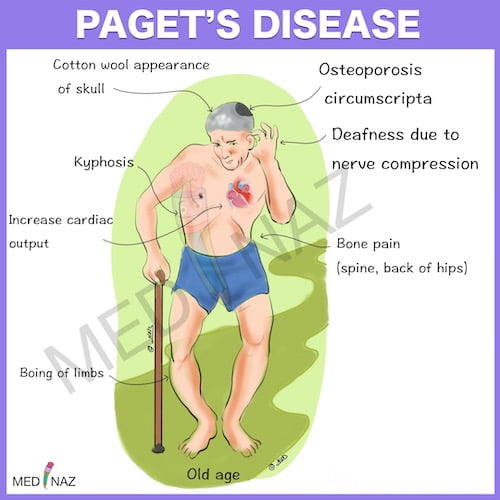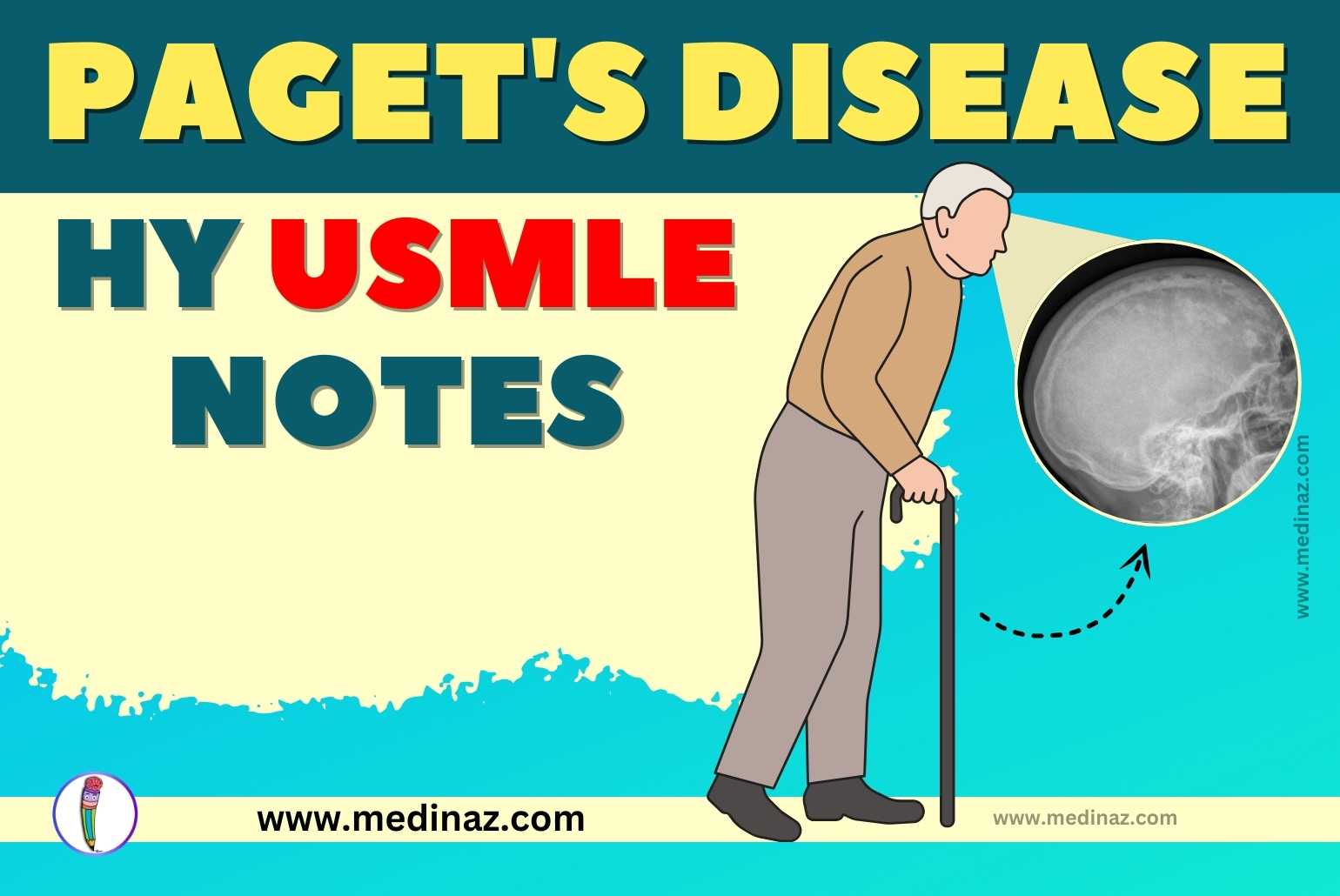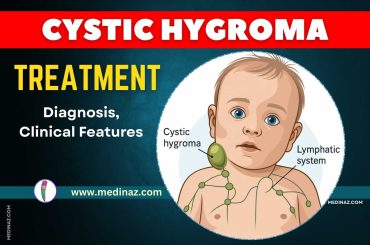Paget’s Disease USMLE Notes & Mnemonics contains all the high-yield points you need to know.
- Definition: A chronic disorder characterized by excessive breakdown and formation of bone, leading to bone enlargement and deformity.
- Etiology: Unknown, possibly viral (paramyxovirus) or genetic factors.
Pathophysiology
- Imbalance in osteoclast and osteoblast activity.
- Initially increased bone resorption followed by excessive bone formation. (ref)
- New bone is larger but weaker and disorganized (mosaic pattern).
Epidemiology
- More common in >55 years old.
- Slight male predominance.
Clinical Features
- Often asymptomatic, found incidentally on X-ray or labs.
- Bone pain and deformity.
- Enlarged skull, hearing loss (due to auditory foramen enlargement).
- Increased hat size.
- Warm skin over affected bones (increased vascularity).
Diagnosis
- X-Ray: Enlarged bones with mixed lytic and sclerotic areas, “cotton-wool” appearance of the skull.
- Lab Tests: Elevated alkaline phosphatase (ALP), normal calcium, and phosphate.
- Bone Scan: Increased uptake in affected areas.
Treatment
- Bisphosphonates: First-line (e.g., alendronate, zoledronic acid) – reduce bone turnover.
- Calcitonin: Second-line, less effective than bisphosphonates.
- Pain Management: NSAIDs or acetaminophen for symptomatic relief.
Complications
- Osteoarthritis (due to abnormal bone structure).
- Fractures (due to weak bone).
- High-output cardiac failure (rare, due to increased vascularity).
- Osteosarcoma (rare but serious complication).

Paget’s Disease USMLE Mnemonic: “PAGETS“
- Paramyxovirus (possible etiology)
- Alkaline phosphatase elevated
- Giant osteoclasts (pathology)
- Enlarged skull
- Thickened, disorganized bones
- Secondary osteosarcoma risk
Check other important USMLE Notes
Note: For USMLE, focus on recognizing the clinical presentation, characteristic radiographic findings, and the importance of alkaline phosphatase in diagnosis. Understanding the first-line treatment and potential complications, especially the rare transformation to osteosarcoma, is crucial.
- There is no specific diet recommended for patients with Paget disease of the bone
- Patients prescribed bisphosphonates should ensure adequate intake of calcium and vitamin D
- Aggressive physical activity is not advised due to the high risk of fractures
- Gentle muscle-strengthening exercises at a moderate intensity are recommended
A Visual Learning Platform





